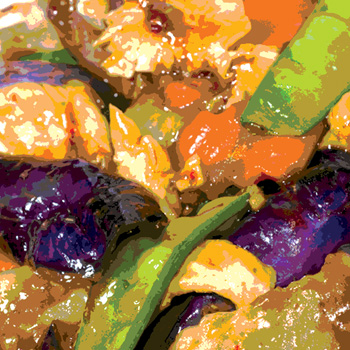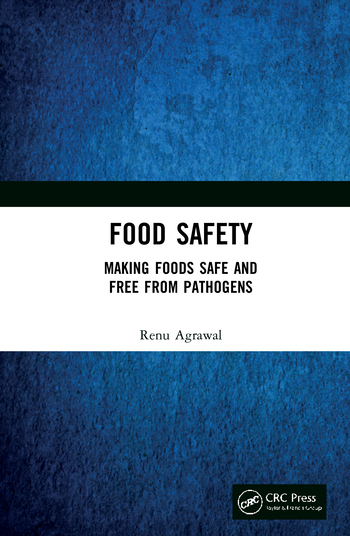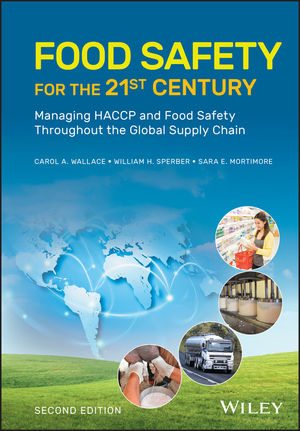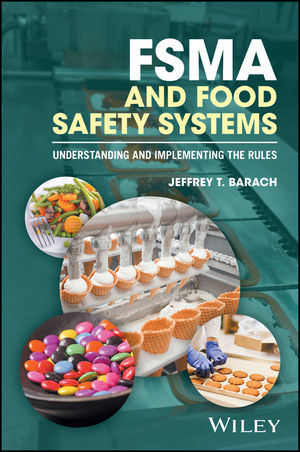Ethnic Foods and the Sanitarian

As a nation, we spend close to 50% of our food dollars on food prepared away from home. A good portion of that food is ethnic cuisine. Our penchant for exotic tastes has led retail food industry pundits to predict that the demand for ethnic foods will see a 50% rise within the next 10 years. As regulators, we not only need to cope with the existing establishments, but we also have to prepare ourselves for the predicted increase in numbers of these establishments, as well as the concomitant increase in the diversity and variety of ethnic menu items.
Our basic and, in most instances, only tool for adjudging ethnic food safety is and will remain the FDA Food Code. How we use this document in dealing with esoteric cuisines and preparation methods will determine consumer confidence and ultimately demand. The science upon which the Food Code is based is both solid and conservative. It is an immensely useful resource document beyond the obvious determinants of compliance versus non-compliance. I have found that the Food Code lends itself quite well to the interpretation of many strange and exotic dishes and their unconventional methods of preparation. Needless to say, ethnic foods present challenges that will require some additional training for field sanitarians. But I’m getting a little ahead of myself.
If we stand back and look at the ethnic retail food industry through a wide-angle lens, several things become quite evident.
• First, we’ve always had “ethnic foods.” The gustatory preferences of the first Europeans landing in the Americas were quite different from those of the First Nation populations. In effect, European dishes were the first ethnic foods introduced to the Western Hemisphere; the second came from Africa. Over more than 300 years, “American” cuisine has definitely evolved and many former “ethnic” dishes from both sides of the pond, as well as those developed here out of availability and need, were modified in their method of preparation and even in their basic ingredients to accommodate demand, societal tastes and ease of cooking.
• Secondly, immigration from China, Japan, Mexico, Latin America and Eastern Europe over the past 100 years has resulted in making some formerly unusual ethnic dishes become mainstream. Likewise, the newest wave of Thai, Vietnamese, Southeast Asian, Pacific Rim, Indian/Pakistani, Caribbean and Near/Middle Eastern immigrants are making foods from those regions more commonplace here. The prediction is that neo-African as well as different Eastern European and East Asian influences will soon follow. In all of those cultures, including those with religious dietary restrictions and preferences, people have been making their native dishes for hundreds, if not thousands, of years without destroying their family groups or their societies through foodborne disease. Therefore, we can assume that something was done correctly in maintaining food safety, particularly on a small scale. The acceptance of pasta, pizza, pot stickers, tacos, sausages and a whole host of corn-based dishes into American culture was made possible by adapting various family recipes to modern, quantity cooking methods. As this trend continues, foods with names such as “kibbee,” “bibimbop,” “pho,” “momos,” “naan,” and “feijoada” will gradually work their way into our everyday tastes and vocabulary. The key to this acceptance lies in the art and science of food safety, as its principles are used in adapting these dishes to modern quantity cooking and safe methods of preparation, packaging, storage and service. By knowing the ingredients and the potential hazards associated with them, by understanding the recipes and the original ways of preparation—admittedly, some of which are quite unconventional by Western standards—we can transcend the mystique of language and substance and assure safe foods for our public.
• Finally, if we look at the world’s diverse culinary offerings, they are all made from animal and vegetable matter with a little bit of minerals used as seasoning. Only their origins, names and appearances differ. Potentially hazardous foods remain potentially hazardous foods, even under the most bizarre conditions. In short, ethnic foods actually are not that much different from what Americans are used to.
An Augmented Approach to Inspections
Aside from the ideal situation of applying huge doses of education and training with sensitivity to ethno-cultural differences, the approach to assessing exotic menu items and kitchen practices for compliance with food safety regulations requires a bit of departure from convention. This approach in no way compromises our primary focus on foods from unsafe sources, inadequate cooking, improper holding temperatures, cross-contamination, unsanitary equipment and poor personal hygiene. I must admit that with many ethnic establishments, agreement on what constitutes proper personal hygiene is still the most difficult to achieve, evaluate and enforce. Therefore, several of my colleagues and I have redoubled our efforts to apply evaluation methods that rely on more quantitative criteria. We have done this by incorporating three food safety tools into our inspection protocols. These include a comprehensive menu review and a modified “as-built” plan review to match the menu items with the kitchen; an abbreviated form of Hazard Analysis and Critical Control Points (HACCP) or “Street HACCP” that specifically targets high-risk ingredients and methods of preparation, packaging and service; and the use of additional field instruments to allow more objective assessments of time/temperature and determine which foods are potentially hazardous. While these three strategies may not be particularly inventive, we have found that by shifting our approach to ethnic food safety slightly outside of convention, we have achieved a better understanding of the ethnic food system within the limited time and resources given to us.
Menu and “As-built” Plan Review
The menu review provides me with the “what.” The modified as-built plan review gives me the “how.” To begin, no matter how well-known an ethnic restaurant is to the community or how many times it has been inspected, I start each visit with a comprehensive menu review. In fact, I insist on obtaining a copy of the menu well in advance of my inspection. Although this applies to all restaurants, it is particularly important in the assessment of ethnic foods. As a sanitarian, I need to know what goes into each menu item, including any unconventional ingredients coming from unconventional sources. A comprehensive menu review completed in my office, with the help of the Internet, lets me do this quite nicely. I start each menu review by using the single most valuable resource I know of: A Food Inspector’s Guide to Ethnic Foods in Michigan, by Dr. Lillian G. Po of Michigan State University. This manual is in the public domain and can be downloaded as a portable document format (PDF) file from the Internet by typing the title into any search engine. While this guide primarily covers Asian and Mexican foods, it does so with a unique approach. It focuses on practical food safety issues and challenges in evaluating the different ethnic dishes by listing the various ingredients and describing in detail the cooking and preparation processes for each menu item catalogued. Probably the most valuable section of this 158-page manual is its glossary of terms. While I’m fairly well versed in English and get by comfortably in German, I have very little acumen in the other 6,700 languages in the world. The glossary really helps me muddle through.
The modified as-built plan review lets me match each menu item to the kitchen, storage and service areas, with an eye toward design flaws and conditions contributory to foodborne hazards. The physical layout of the facilities, the processing equipment (including those items specific to cooking and refrigeration), the utensils, the traffic patterns and the sanitation capabilities are evaluated, along with any specifications of existing material that meet food protection and production requirements. By completing this exercise, the modified as-built plan review can be integrated with requirements detailed in the Food Code.
A Modified Approach to HACCP
For most applications to ethnic eateries, I prefer a modified approach to HACCP. From our vantage point, “Street HACCP” would be particularly attractive as a component of the regulatory inspection. “Street HACCP” that focuses on HACCP steps 2, 4 and 7 seems best suited for this application and will meet the least resistance from the owner/operator. These HACCP steps include:
• Identifying CCPs. These are points in food preparation, from raw state through processing, storage and serving to the customer, which have the greatest risk of promoting a foodborne misadventure. These also represent the points at which the hazards can be controlled or eliminated.
• Establishing procedures to monitor the CCPs. This is basic and straightforward time and temperature control that can be accomplished using an inexpensive thermocouple or thermistor thermometer, leaving the preference as well as the practice to the owner/operator. In this way, ownership for food safety is formally established.
• Establishing effective record keeping to document the modified HACCP system. I let the owner/operator decide on the level of documentation, but encourage, at a minimum, two-hour temperature monitoring intervals. However, I insist that all potentially hazardous foods received shall be monitored and the temperature logged or recorded on the invoice or receiving report. In addition, I encourage some consistent form of daily time and temperature record keeping of cold-holding equipment. I do not insist that the records are kept in English or use the Latin alphabet. If the establishment wants to use cuneiform and hieroglyphs, this is OK with me, just as long as the restaurant’s workforce can read it and knows its significance. After all, record keeping is for the folks who prepare and serve the food. I feel that becoming comfortable with record keeping is an important teaching tool in establishing a comprehensive food safety program.
Instrumentation and Sampling Strategies
Because many ethnic dishes use unusual methods of preparation and even more exotic ingredients, by adding a few simple instruments and instrument components to the sanitarian’s inspection tools, a more comprehensive and quantitative evaluation is possible. These additional tools help the sanitarian identify critical issues that can easily be overlooked.
The latest iteration of the Food Code included an expanded definition of potentially hazardous foods to include pH and water activity. These two factors figure prominently in many ethnic food ingredients. Consider how foods were preserved before the invention of the modern refrigerator: heating to kill or denature organisms, oxidation, toxic inhibition, dehydration, osmotic inhibition, chelating and combinations of these methods. Add to this the many modern modes of preserving the flavor and texture of prepared ethnic foods. These may include freezing, modified atmosphere or vacuum packaging, canning and bottling, jellying, jugging and potting—just to name a few. With such a broad spectrum of choices, we can no longer rely on a bimetal thermometer and luck. While I was admonished that the addition of water activity and pH to the Food Code were not meant for local enforcement, they have become absolutely essential parameters in evaluating the safety of ethnic foods. To do a credible evaluation, consider adding a portable water activity meter and a selection of three different types of pH monitors that include a sturdy portable potentiometer, pH papers and pH liquid indicators; each has a specific use. I have also added a Brix/salinity refractometer to my arsenal to measure and catalog brine and sugar solutions unique to certain menu items.
For measuring cooking and both cold and hot holding temperatures in ethnic food kitchens, the infrared thermometer with spot or laser targeting is still the best and most convenient screening tool. However, for taking direct temperature measurements using the thermocouple thermometer, the single-needle probe will not provide the universality of application needed in most ethnic kitchens. Consider augmenting the thermocouple thermometer with several K-probes:
• A fry vat and/or cooking vat probe is essential for monitoring cooking and cooling temperatures in larger stock pots and kettles.
• Bell surface probes have a million and one uses, particularly in monitoring finished products as well as cooking, serving and holding equipment.
• A heavy-duty needle probe and a frozen product probe are essential for measuring the temperatures of raw ingredients and finished products offered for take-out sale.
This is by no means an all-inclusive list, but it is a minimum recommended addition to the suggested basic equipment list in Annex 5: Conducting Risk-Based Inspections of the 2005 Food Code.
The argument that we can neither afford the additional equipment nor the time it takes to perform a menu and facility review and to set up a simple, workable “Street HACCP” program, is spurious and totally without merit. Our mission is to protect the public against foodborne illnesses inasmuch as possible. If we are to do due diligence in conducting credible food safety inspections of ethnic retail establishments, we will need all the tools and training available. As Calvin said to Hobbes in the last panel of the cartoonist’s last strip, “It’s a magical world, Hobbes ol’ buddy…let’s go exploring!”
Forensic sanitarian Robert W. Powitz, Ph.D., MPH, RS, CFSP, is principal consultant and technical director of Old Saybrook, CT-based R.W. Powitz & Associates, a professional corporation of forensic sanitarians who specialize in environmental and public health litigation support services to law firms, insurance companies, governmental agencies and industry. For more than 12 years, he was the director of environmental health and safety for Wayne State University in Detroit, MI, where he continues to hold the academic rank of adjunct professor in the College of Engineering. He also served as director of biological safety and environment for the U.S. Department of Agriculture at the Plum Island Animal Disease Center at Greenport, NY. Among his honors, Powitz has received the NSF/NEHA Walter F. Snyder Award for achievement in attaining environmental quality, and the AAS Davis Calvin Wagner Award for excellence as a sanitarian and advancing public health practice. He is the first to hold the title of Diplomate Laureate in the American Academy of Sanitarians, and also is a Diplomate in the American Academy of Certified Consultants and Experts and with the American Board of Forensic Engineering and Technology.
Dr. Powitz welcomes reader questions for discussion in upcoming columns. Feedback or suggestions for topics you’d like to see covered can be sent to him directly at Powitz@sanitarian.com or through his Web site at www.sanitarian.com.
Looking for a reprint of this article?
From high-res PDFs to custom plaques, order your copy today!







